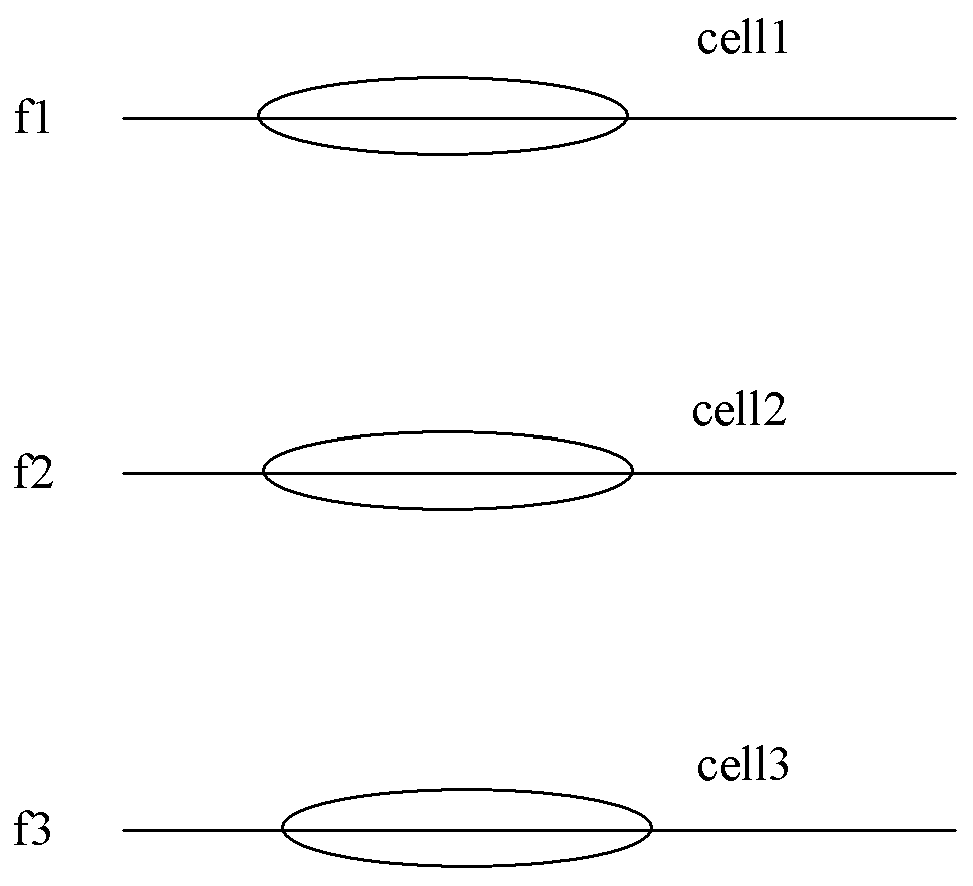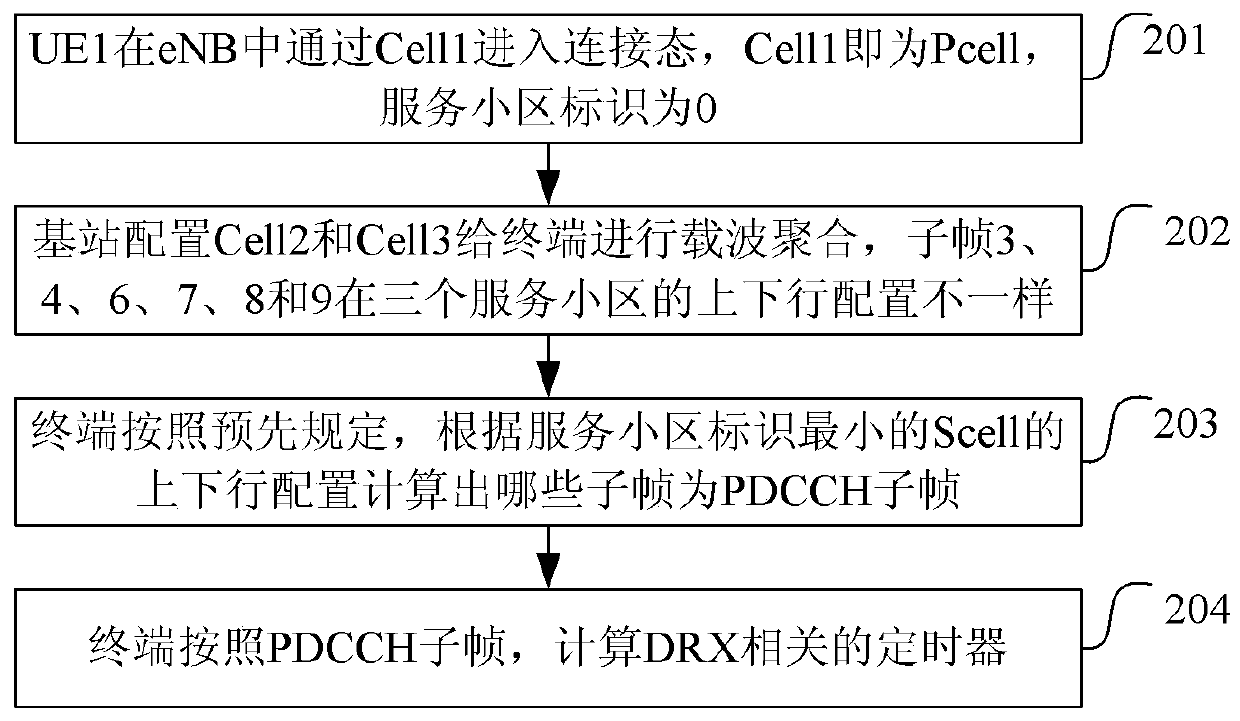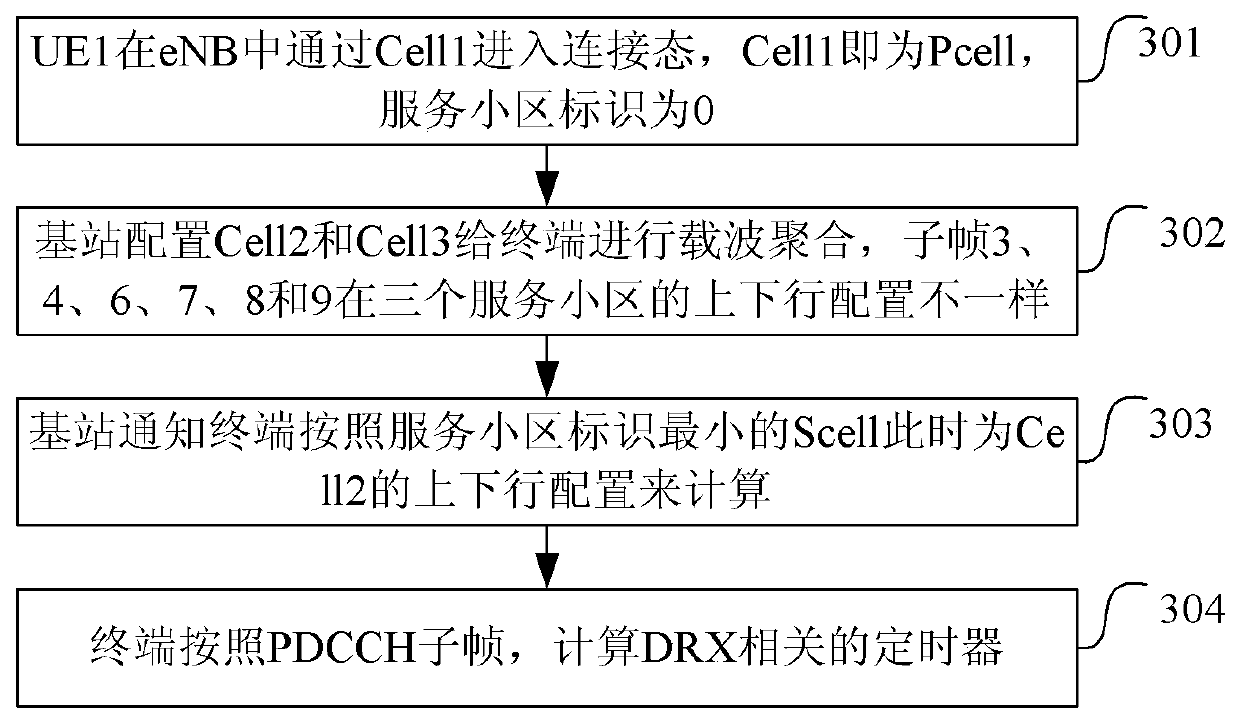A method, terminal and network equipment for performing carrier aggregation
A carrier aggregation and carrier technology, applied in digital transmission systems, error prevention, electrical components, etc., can solve problems such as wasted subframes, terminals ignore base station scheduling, etc., and achieve the effect of avoiding scheduling errors
- Summary
- Abstract
- Description
- Claims
- Application Information
AI Technical Summary
Problems solved by technology
Method used
Image
Examples
Embodiment 1
[0041] Such as figure 2 As shown, the method for performing carrier aggregation in this embodiment includes:
[0042]Step 201: UE1 enters the connected state through Cell1 in the eNB, Cell1 is the Pcell, and the serving cell ID is 0;
[0043] Step 202: Due to the increase in traffic, the base station configures Cell2 and Cell3 for the terminal to perform carrier aggregation. Cell2 is a Scell, and the serving cell ID is set to 1. Cell3 is also a Scell, and the serving cell ID is set to 2. It can be seen from Table 0-1 , the uplink and downlink configurations of subframes 3, 4, 6, 7, 8 and 9 in the three serving cells are different;
[0044] Step 203: The terminal calculates which subframes are PDCCH subframes according to the uplink and downlink configuration of Cell2 according to the Scell with the smallest serving cell identifier, that is, in the uplink and downlink configuration of Cell2, the downlink subframes or the subframes containing DwPTS The frame is a PDCCH subf...
Embodiment 2
[0052] Such as image 3 As shown, the method for performing carrier aggregation in this embodiment includes:
[0053] Step 301: UE1 enters the connected state through Cell1 in the eNB, Cell1 is the Pcell, and the serving cell ID is 0;
[0054] Step 302: Due to the increase in traffic volume, the base station configures Cell2 and Cell3 for the terminal to perform carrier aggregation. Cell2 is a Scell, and the serving cell ID is set to 1. Cell3 is also a Scell, and the serving cell ID is set to 2. It can be seen from Table 0-1 , the uplink and downlink configurations of subframes 3, 4, 6, 7, 8 and 9 in the three serving cells are different;
[0055] Step 303: The base station notifies the terminal to calculate the uplink and downlink configuration of Cell2 according to the Scell with the smallest serving cell identifier at this time, that is, in the uplink and downlink configuration of Cell2, the downlink subframe or the subframe containing DwPTS is a PDCCH subframe, and the ...
Embodiment 3
[0065] Such as Figure 4 As shown, the method for performing carrier aggregation in this embodiment includes:
[0066] Step 401: UE1 enters the connection state through Cell1 in the eNB, Cell1 is the Pcell, and the serving cell ID is 0;
[0067] Step 402: Due to the increase in traffic volume, the base station configures Cell2 and Cell3 for the terminal to perform carrier aggregation. Cell2 is a Scell, and the serving cell ID is set to 1. Cell3 is also a Scell, and the serving cell ID is set to 2. It can be seen from Table 0-1 , the uplink and downlink configurations of subframes 3, 4, 6, 7, 8 and 9 in the three serving cells are different;
[0068] Although the uplink and downlink configurations of subframe 6 are different, they are all downlink subframes or subframes containing DwPTS, which belong to PDCCH subframes, so no separate configuration is required, that is, the base station only needs to configure subframes 3, 4, 7, 8 and 9 That's it.
[0069] Step 403: The base...
PUM
 Login to view more
Login to view more Abstract
Description
Claims
Application Information
 Login to view more
Login to view more - R&D Engineer
- R&D Manager
- IP Professional
- Industry Leading Data Capabilities
- Powerful AI technology
- Patent DNA Extraction
Browse by: Latest US Patents, China's latest patents, Technical Efficacy Thesaurus, Application Domain, Technology Topic.
© 2024 PatSnap. All rights reserved.Legal|Privacy policy|Modern Slavery Act Transparency Statement|Sitemap



